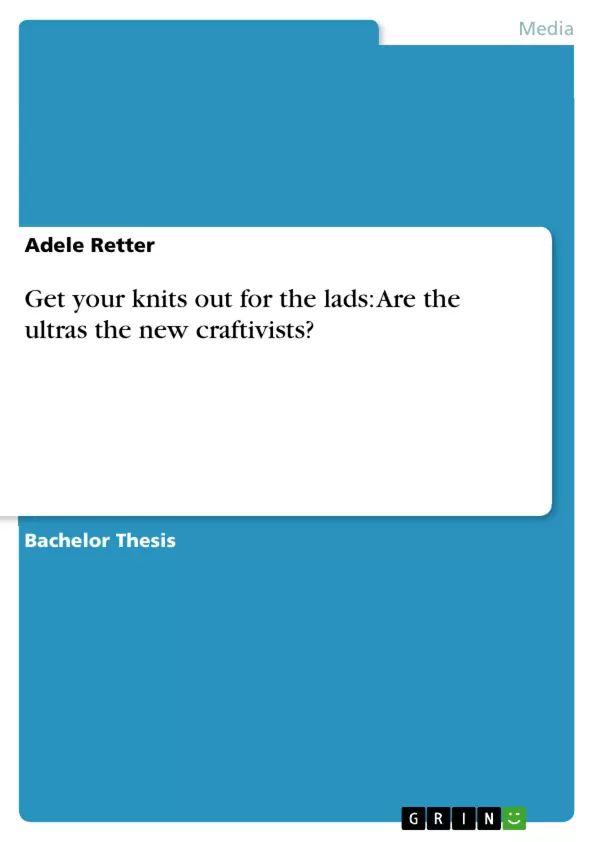This dissertation proposes that groups of particularly passionate football fans are a form of craft community. The ‘ultras’ create extravagant displays which enhance their performances during football matches. Much attention has been paid to hooliganism and football violence, but very little has been written about the positive and creative aspects of football fandom.
This paper asks if the ultras are a community of practice. They are compared with the ‘craftivists’, and the notion of ‘home’ is discussed within the context of football and the re-evaluation of private spaces. The political nature of the ultras is considered and the concept of ‘the political‘ is addressed, with reference to Chantal Mouffe’s insights into the failure of politics to embrace the political and the importance of antagonism in political discourse.
The performative nature of the ultras raises the question whether this can be considered artistic practice, in the light of Grant Kestor’s discussion of ‘dialogical aesthetics’ and the role of dialogue-based artistic interventions.
The conclusions drawn from this study suggest that the ultras are a community of practice through expressing a shared repertoire and through the organisation of public events. The artistic practices of the ultras are evident but difficult to define. The manner in which the ultras support their club and the criticisms they direct towards the authorities contradict their apolitical position; Kestor’s dialogical aesthetics, particularly the role of empathy, could be used to heal the rift between the ultras and the football associations.
Inhaltsverzeichnis (Table of Contents)
- Introduction
- Chapter 1: Who are the ultras and are they a community of practice?
- Chapter 2: What are the similarities with craftivists and what is the notion of 'home'?
- Chapter 3: What is the political nature of the ultras?
- Chapter 4: Are the ultras artists?
Zielsetzung und Themenschwerpunkte (Objectives and Key Themes)
This dissertation examines the ultras, a group of passionate football fans, through the lens of community of practice, artistic expression, and political engagement. It investigates whether their elaborate displays and performances can be classified as a form of craft, exploring similarities to the craftivist movement. The study also analyzes the political dimensions of the ultras, considering the role of antagonism in political discourse and the potential for their actions to be viewed as artistic practice.
- The ultras as a community of practice
- Similarities between the ultras and craftivists
- The political nature of the ultras
- The artistic practices of the ultras
- The concept of 'home' in relation to football and the ultras
Zusammenfassung der Kapitel (Chapter Summaries)
Chapter 1 delves into the identity of the ultras, exploring whether they form a community of practice. It examines the shared repertoire and public events that characterize their activities. Chapter 2 compares the ultras to the craftivist movement, highlighting similarities in their practices and objectives. The chapter also discusses the notion of 'home' within the context of football and the re-evaluation of private spaces. Chapter 3 focuses on the political nature of the ultras, analyzing their opposition to authority and the significance of antagonism in their discourse. Chapter 4 investigates whether the ultras can be considered artists, drawing on concepts of dialogical aesthetics and the role of dialogue-based artistic interventions.
Schlüsselwörter (Keywords)
This dissertation examines the following keywords: ultras, football fandom, community of practice, craftivists, home, political engagement, antagonism, artistic practice, dialogical aesthetics.
- Quote paper
- Adele Retter (Author), 2014, Get your knits out for the lads: Are the ultras the new craftivists?, Munich, GRIN Verlag, https://www.grin.com/document/276692



